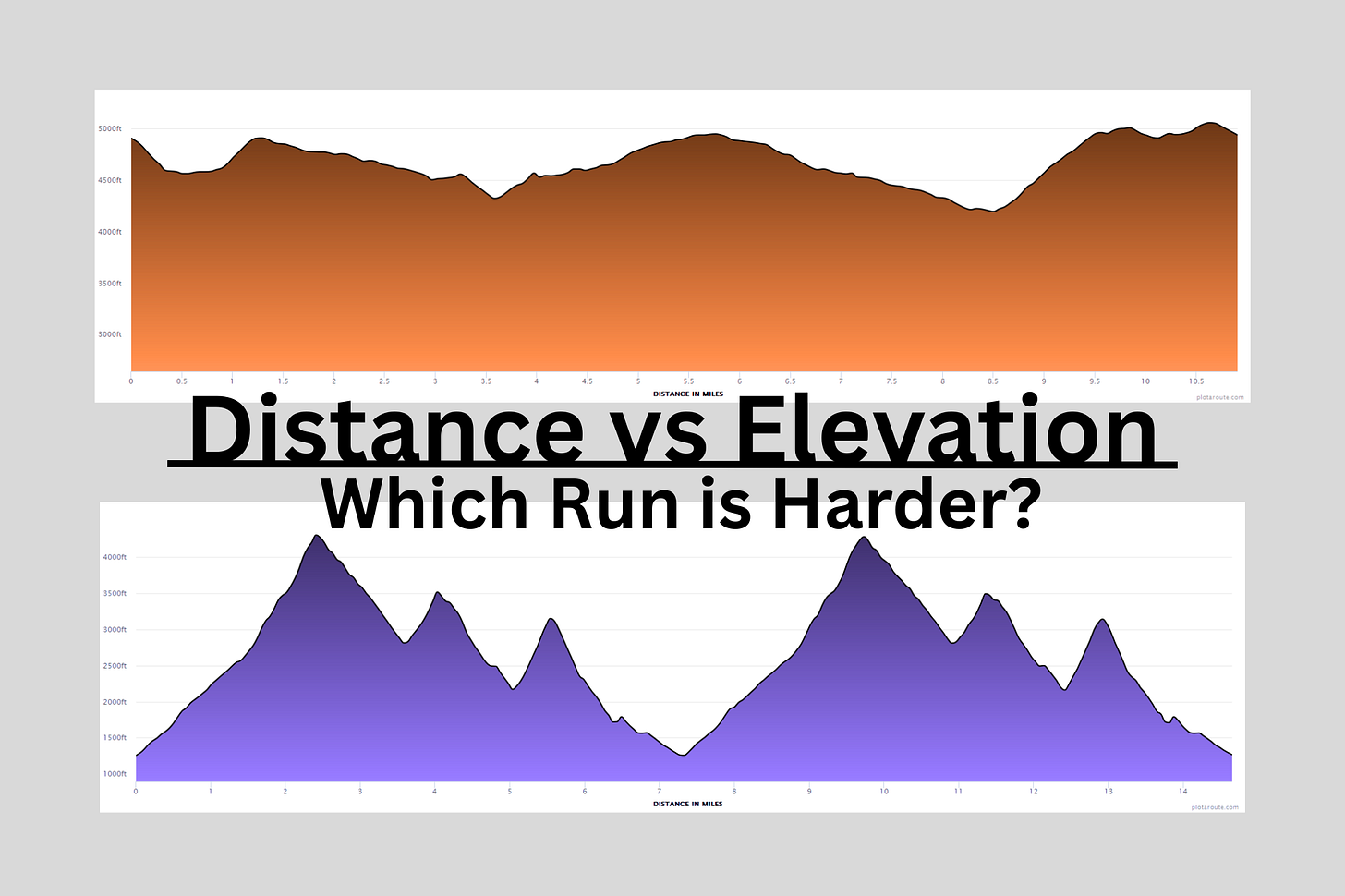Distance vs Elevation: Which Run is Harder?
Do you struggle to decide which run or race would be most difficult to endure by the distance and/or elevation? Are you thinking about running a 100k with 10,000ft of vert compared to a 100 Mile with 15,000ft of vert? Let’s dive into the math to figure out which would be harder and why.
First, use the Elevation Gain per Mile to help normalize elevation difficulty by distance.
Elevation Gain ÷ Distance = Elevation per Mile
So, if you are thinking about the two races, here is the elevation per mile for each race:
10,000ft / 100k (62.1M) = 161 ft/mile
15,000ft / 100M = 150 ft/mile
—> the 100k is steeper which could lead to a harder race, despite being a shorter distance.
A higher elevation per mile = more climbing packed into less distance = more effort in the race. - Typically.
Now, let's consider the Total Workload.
Adjusted Distance = Distance (miles) + (Elevation Gain in feet ÷ 100)
This will treat every 100ft of elevation as an extra mile of flat effort. This means you can change that 100 in the equation to be easier or harder depending on how rough the terrain is on the course.
For the 100k and 100M examples, here is the math:
100k: 62.1M + (10,000 / 100) = 162.1 miles effort
100M: 100M + (15000 / 100) = 250 miles effort
—> the 100 M is harder by overall effort, but the 100K could be steeper.
This is when it comes down to reading the course profile and seeing if there is one giant climb or rolling hills. It's where you can find the grade % off of the GPX file using sites like Strava, Caltopo, Gaia, Ultra pacer, Garmin, etc. These sites allow you to see the course profile and the % grade. It is very useful!
But you can also do the grade % by using this equation:
(Elevation Gain ÷ Distance climbed) × 100 = Grade %
A steep grade will be significantly more taxing on you.
But wait there’s more!
That is all the math and ‘hard work’ to figure out which race would be harder. But there tends to be that famous… ‘it depends’ that we all hear as runners. And I feel like this is another example of that. Because it does depend on a few things. One of the most important things would be what YOU consider harder.
Something to consider, I am often asked which race is harder due to the elevation profile for one specific distance. An example would be someone looking at a 100 Miler and the elevation profile is the same, e.i, 10,000ft of vert. For this, you have to look at the race profiles to see where the elevation gain is.
Some races may have rolling hills.
Some races may have one huge climb at the beginning, middle, or end of the race.
In this scenario, the difficulty of the race will be subjective to the runner. It will depend on what their strengths and weaknesses are. Not only physically but mentally. It can be hard for one person to do rolling hills and easy for someone else. As it can be harder for someone to do one giant climb in a race and not for another person.
So, as you can see, sometimes the elevation and distance of a race can play a huge role in the effort to complete the race. Looking at the course profile is very important. Someone may think rolling hills are harder. And that will be true for them. Only you will know what will be harder for YOU in these races.
So, who is ready to tackle their next race with all the vert?
Liz







